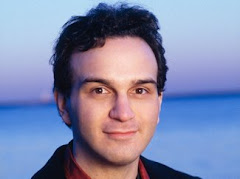Having stayed away from the DFP Hall for almost 6 months, I ventured to watch a perennial favourite guest conductor with the Malaysian Philharmonic Orchestra (MPO), Roberto Abbado in a programme entitled "Tales of Triumph" on 1 December. The concert began with Beethoven's Coriolan Overture Op 62, after Heinrich von Collin's play. Abbado and the MPO's account could perhaps have benefited from revealing more of Beethoven’s rougher edges as well as greater drama and turbulence in the tense opening of the overture. However, Abbado's lyrical "con amore" manner of playing the poignant second subject was masterfully conveyed.
Next on the programme was Hindemith's Mathis der Maler (Matthias the Painter), which was first performed in Berlin in 1934 but was receiving its first Malaysian performance at the DFP in front of an unsophisticated KL audience. The MPO and Abbado delivered the opening “Angelic Concert” with a serene joy and clarity that distinguished its varied polyphonic voices. The hushed interplay between solo woodwinds and pizzicato strings of the second movement (“Entombment”) recollected the sombre and doleful atmosphere which pervades this music. In the final visceral movement (“The Temptation of St Anthony”), Abbado and the MPO got to grips with this music with the stabbing strings, sharp crescendos and the fortissimo outbursts from the brass that propelled the music forward to its Lauda Sion Salvatorem chorale and culminating in the final grand brass-led Alleluia.
After the interval, Abbado and the MPO gave us one of the most enervating performances of Brahms' Symphony No 1 that I had ever heard. The opening introduction (Un poco sostenuto) was ponderous, though Abbado stressed Brahms' espressivo and legato markings. The following Allegro was similarly stolidly played but was devoid of the demonic passion and wild energy that Brahms' contemporary Walter Niemann once described as characterising this opus.
Abbado's lyrical approach worked to better effect in the middle two movements. In the hymn-like second movement (Andante sostenuto), the massed MPO strings did not overwhelm the solace of Simon Emes’ wonderful oboe passages nor the yearning of guest concertmaster Alexander Kagan’s silken violin soli. The pizzicato accompaniment in the third movement provided a gentle backdrop for Gonzalo Esteban's mellifluous clarinet solo.
Only the shortest of breaks was taken between the sunny ending of the third movement and the start of the finale. The dark, searching opening eventually gave way to two marvellously executed stringendo pizzicato passages. Though perfectly played intonation-wise and devoid of split notes, principal hornist Grzegorz Curyla's was a meek account of the glorious and heroic Alphorn solo.
Abbado then took the mellow G-string violin melody (marked Allegro non troppo, ma con brio) at a lugubrious pace, which resulted in a most violent acceleration at bar 94, marked only animato and not molto accelerando. Surely, this accounted for the serious structural disjointedness of Abbado's interpretation of the fourth movement. Despite its grand and fiery conclusive coda, this proved a little too late to save the musical day.
Wednesday, 4 December 2019
Roberto Abbado's disappointing Beethoven and Brahms
Subscribe to:
Post Comments (Atom)

















































2 comments:
Thanks admin for the post, Its really a nice post and Looking for more blogs like this. Please stay updated..!
Indian Keto Coach in Texas
Cool
Post a Comment